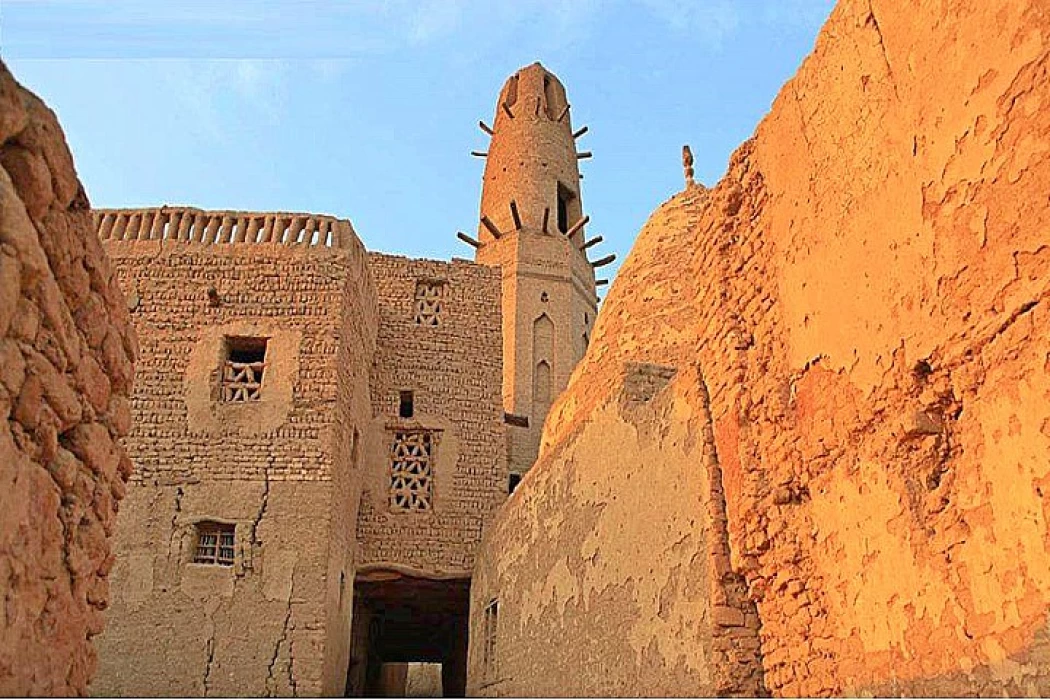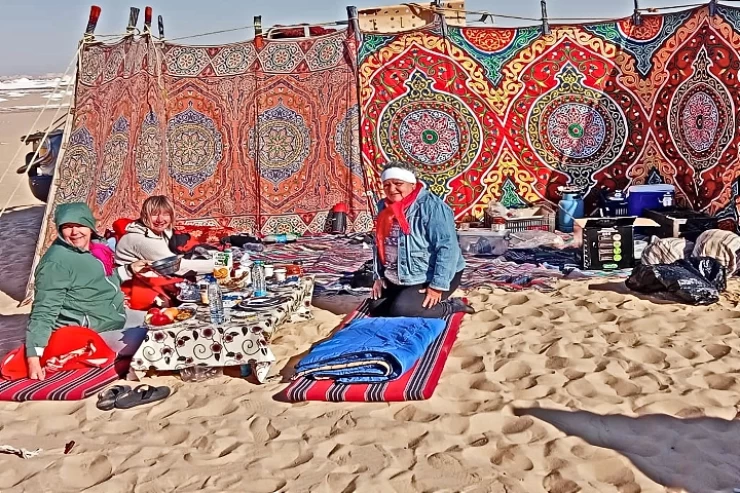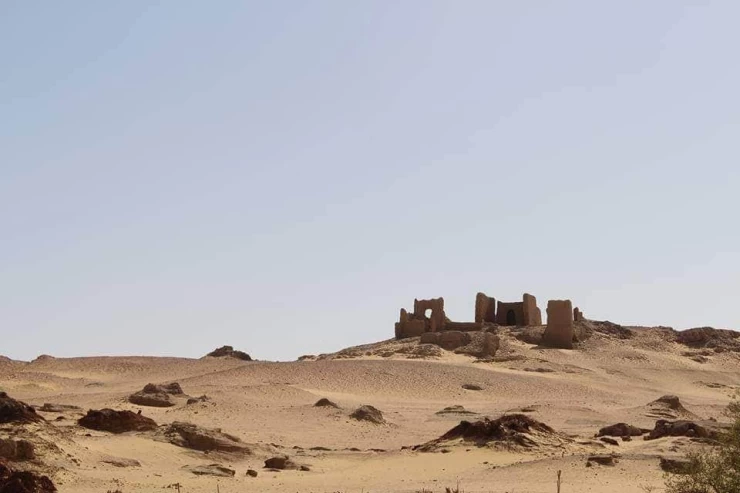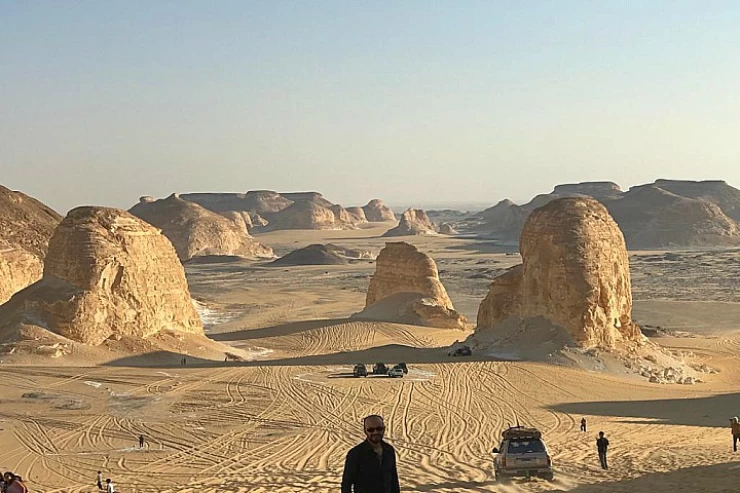
El Dakhla Oasis
Dakhla Oasis, nestled in Egypt's Western Desert, has a rich tapestry of history. Dating back to the pharaonic era, it was a vital hub along ancient trade routes connecting Egypt to sub-Saharan Africa. The oasis's strategic location made it a melting pot of cultures, influenced by Greeks, Romans, and Byzantines. Roman-era ruins, including forts and temples, still dot the landscape, showcasing the area's historical significance. During the medieval period, it continued to thrive as a center for agriculture and trade. Today, Dakhla Oasis offers a glimpse into its storied past through its well-preserved archaeological sites and historical architecture.
Attractions and Activities
Historical Sites:
Al-Qasr Village: A well-preserved medieval village, renowned for its ancient Islamic architecture and narrow alleys. The village’s mosque, built in the 12th century, and the old fortifications provide a window into the past.
Roman Ruins: The oasis is home to several Roman-era archaeological sites, including the remains of temples and forts that highlight its historical significance as a trade and military post.
Temple of Hibis: Located in the nearby Kharga Oasis but often included in tours of the region, this temple is one of the best-preserved temples from the late period of ancient Egyptian history.
Natural Wonders:
Sand Dunes: The surrounding desert features stunning sand dunes perfect for photography, desert safaris, and camel rides.
Hot Springs: The oasis is dotted with natural hot springs, such as those at the village of Bir Abu Rashed, offering a relaxing soak amidst the desert landscape.
Cultural Experiences:
Local Villages: Visitors can explore traditional villages like Dakhla and Moghra, where local customs, crafts, and hospitality provide a genuine cultural experience. Traditional handicrafts, such as woven textiles and pottery, are available for purchase.
Bedouin Culture: Engage with the Bedouin communities to learn about their traditional ways of life, including their music, dance, and cuisine.
Outdoor Adventures:
Desert Trekking: Guided desert treks can be arranged to explore the vast, arid landscapes, with opportunities to witness stunning sunsets and star-filled skies.
4x4 Excursions: Off-road tours offer an adventurous way to explore the remote and varied terrain of the oasis and its surroundings.
Practical Information
Travel and Accessibility: Dakhla Oasis is accessible via road from Cairo, which is approximately 600 kilometers away. There are also regional airports with flights connecting to major Egyptian cities.
Accommodation: Options range from comfortable eco-lodges and hotels in the main towns to more basic guesthouses and campsites in rural areas.
Best Time to Visit: The best time to visit is during the cooler months from October to April, when temperatures are more comfortable for outdoor activities.
Conservation and Sustainability
Efforts are being made to promote sustainable tourism in Dakhla Oasis to preserve its unique environment and cultural heritage. Visitors are encouraged to follow eco-friendly practices and respect local customs and traditions.
Dakhla Oasis offers a unique and immersive experience into Egypt’s desert life, combining historical exploration with natural beauty and cultural richness.
The essence of El Dakhla Oasis is deep in the Western Desert of Egypt. This place has an oasis that is a picturesque paradise integrated into history, nature, and silence. It has verdant expanses in an arid scenery, making it a concealed treasure worth discovering. To an adventurous spirit, a historical sucker, or just someone looking for a quiet place to recharge, this oasis has it all.
El Dakhla Oasis presents an unusual combination of golden dunes, green fields, and natural hot springs. The beauty is complemented with palm groves and gardens flourishing in the heart of the desert. Dip into Bir Al-Gebel, a hot water spring famed for its healing potentials, or enjoy swimming in the fresh pools of Ain Al-Kasr. Places as quiet as these offer an ultimate rejuvenation experience.
Dakhla Oasis is taken into account as one of the most attractive oases in Egypt. within the oasis, there are quite five hundred thermal springs like those of Bir Tarfawi and Bir Al-Gebel, in addition to charming adobe homes and ruins of the medieval era of the cities of Al-Qasr and Balat.
Dakhla is organized around the main city, Mut, a town that dates back to swayer times and is named after goddess Mut, the consort of god Amun-Re. Though mutton has evolved to become a contemporary traveler dominion, these days you'll still see remains of the previous city.
Dakhla will hardly be thought of as one unit. It's rather a series of tiny cities and hamlets scattered on the road; however, it offers the foremost lovely landscapes and also the most exceptional views of all the oases of the western desert. Plantations of olives, oranges, and dates are interspersed with sand dunes on the road. The localities of the oasis shelter the majority of fascinating remains, just like the Tombs of Al-Muzawaka, which date from the swayer amount, or Al-Qasr, a charming medieval town, product of clay bricks, a number of those buildings initiate the tenth century. It's a true maze of slender streets and secret passages. engineered at the foot of rock cliffs, and it is the example of the medieval Islamic town dominated by the place of worship, Nasr el-Din, a high tower covered in rough logs akin to the minarets of mosques in a geographic region. In Al-Qasr, the tower is constructed within the Ayyubid vogue (1171-1250).

















